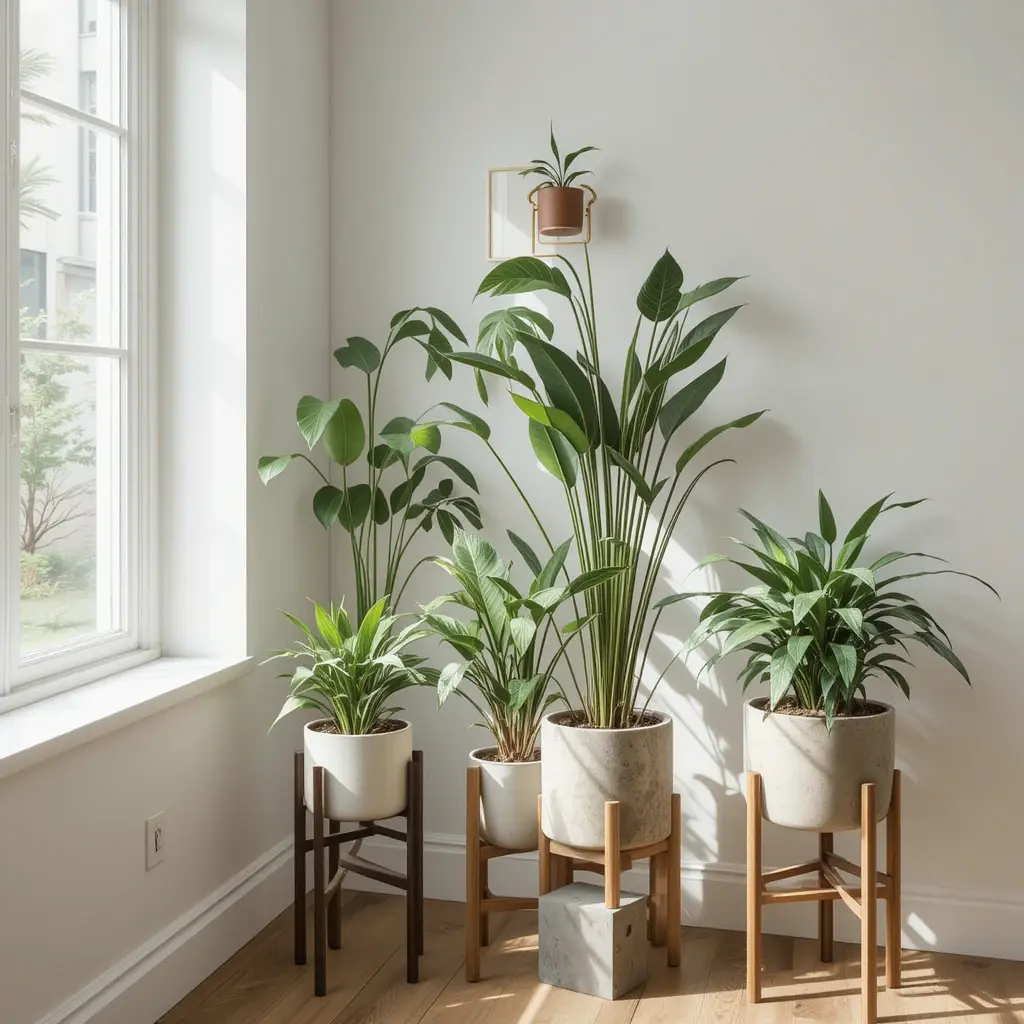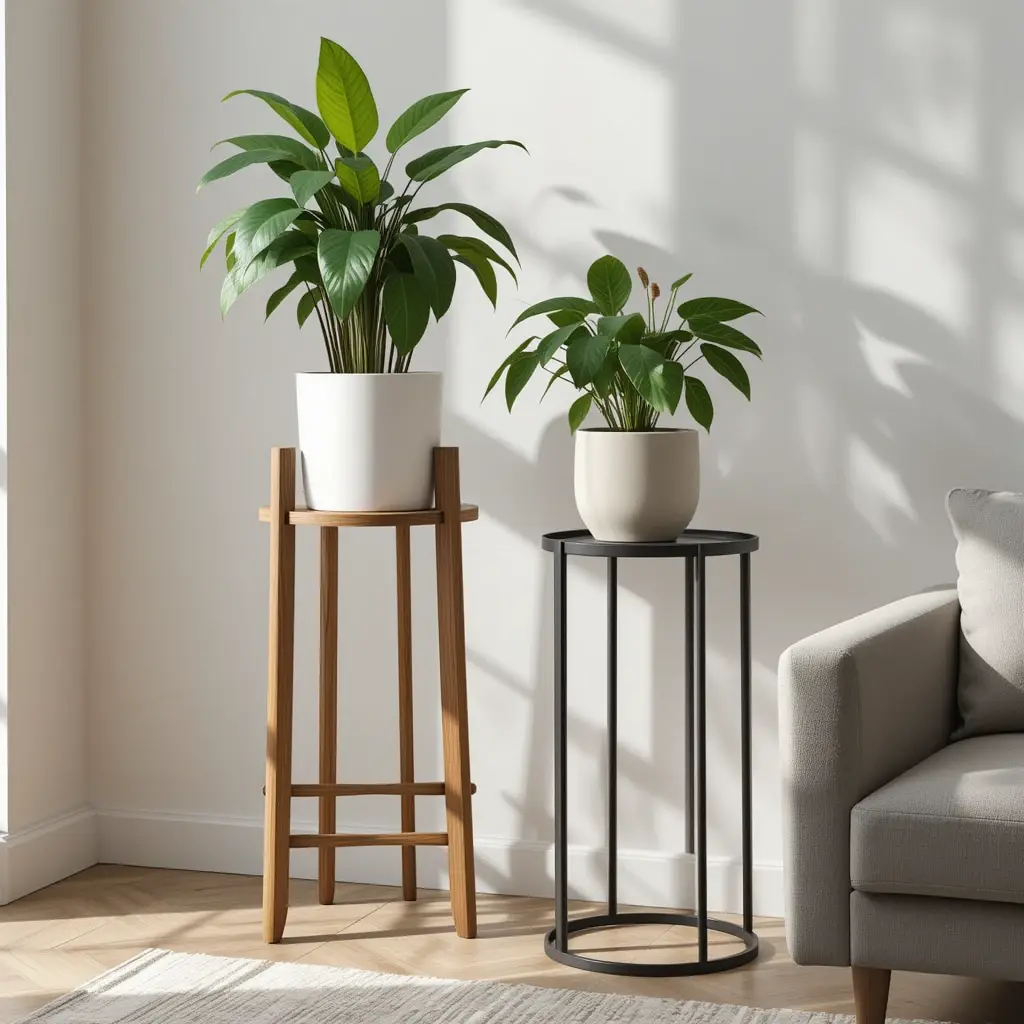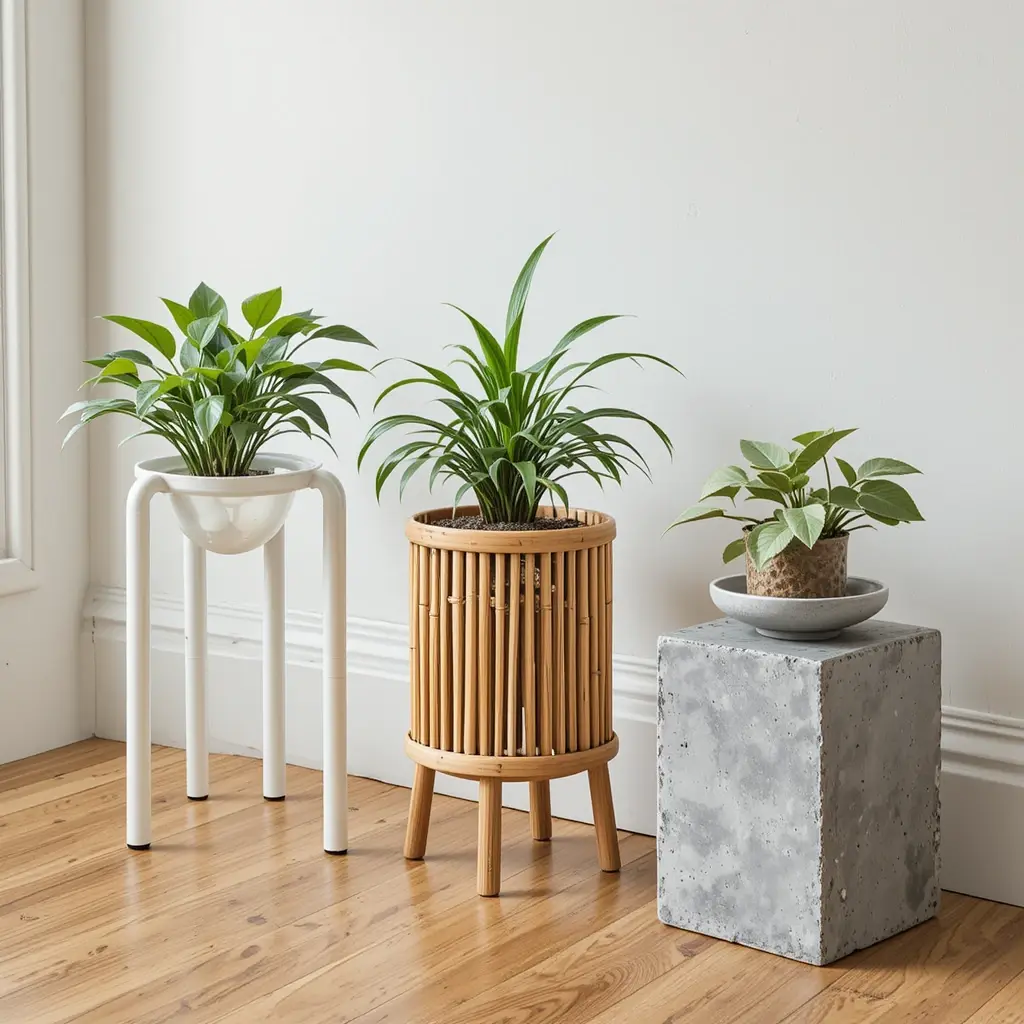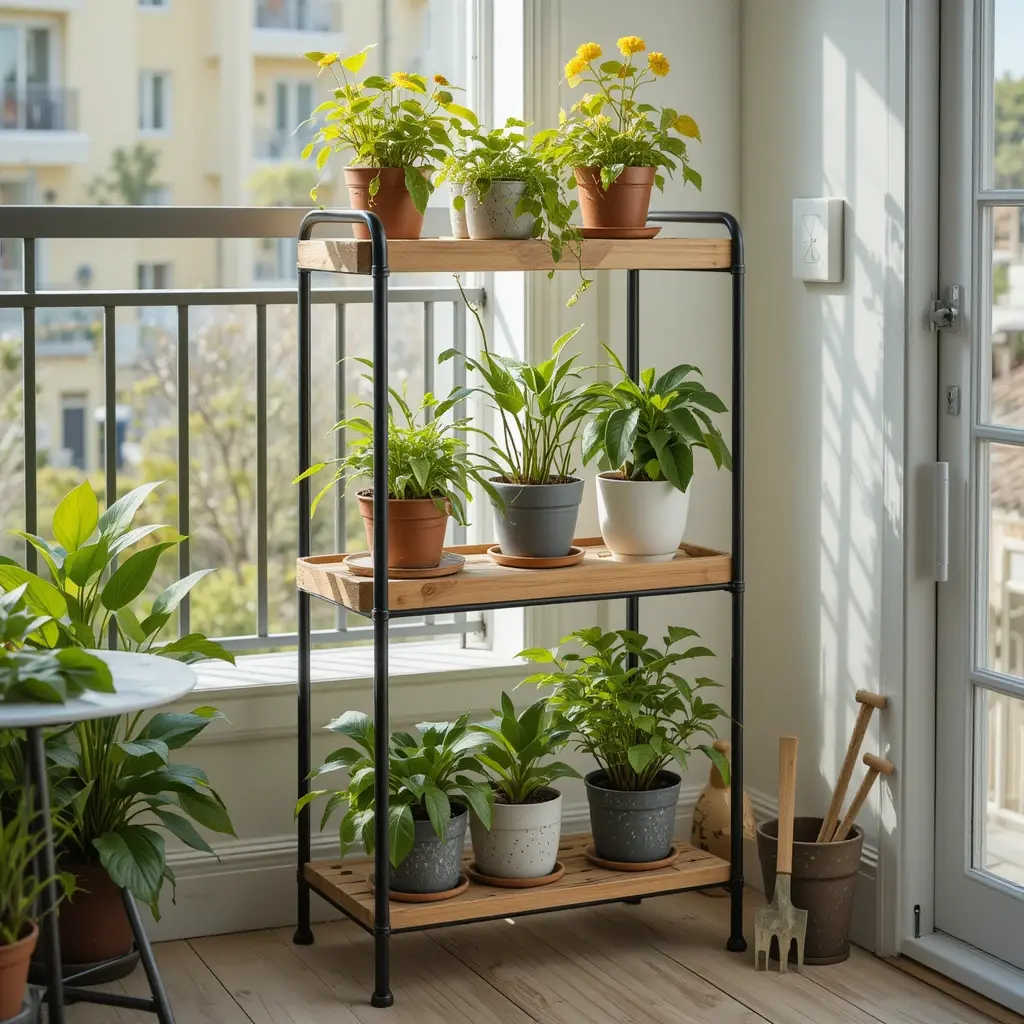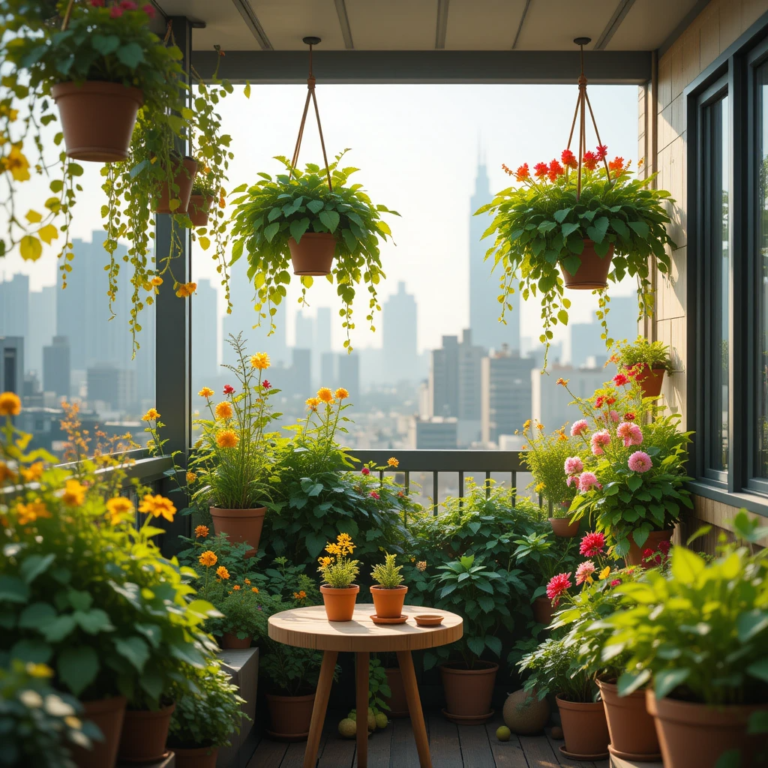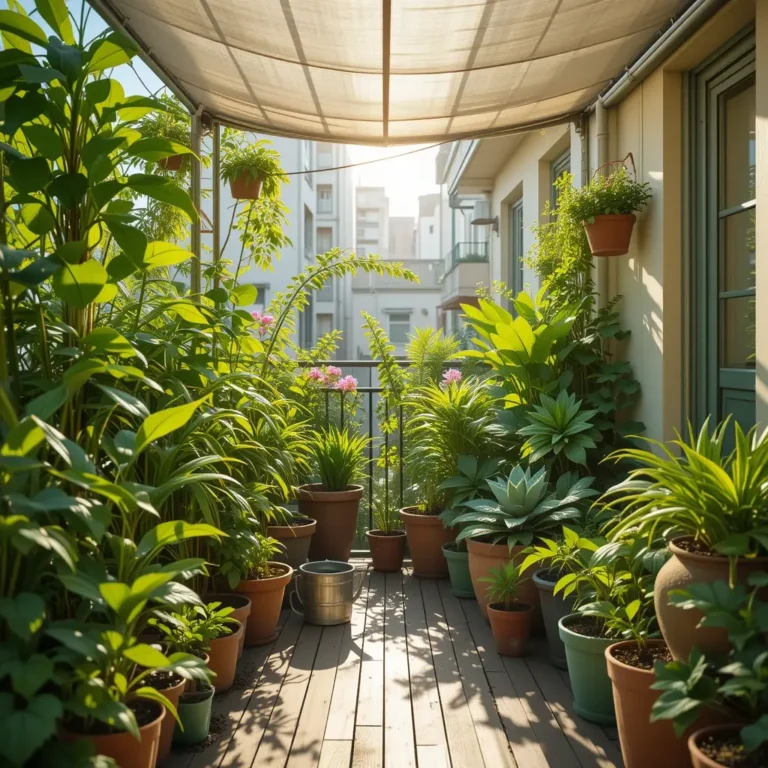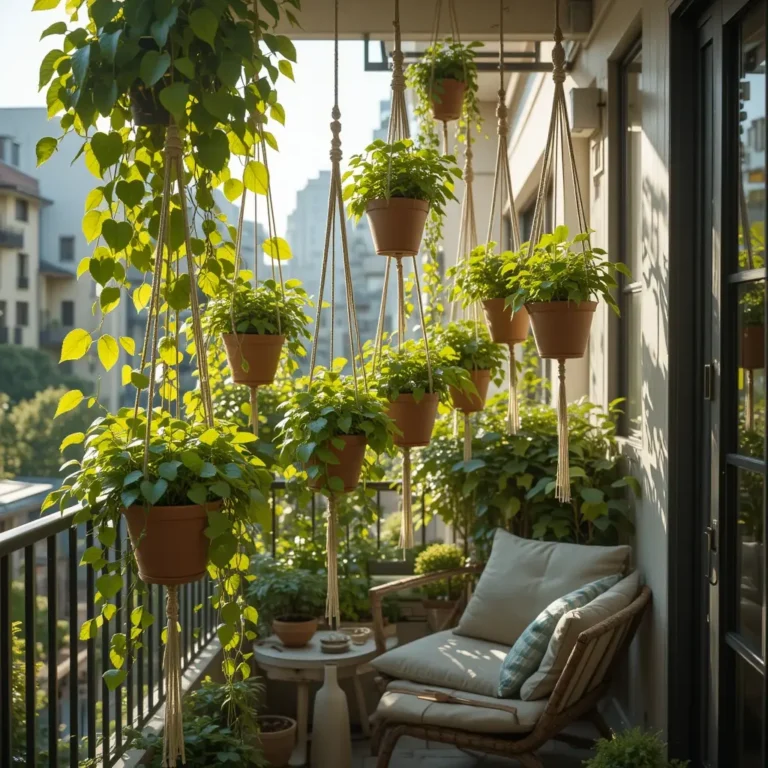Best Materials to Build Your Own Plant Stand (With Examples)
Indoor plants add life, color, and calm to any space — but displaying them beautifully requires more than just a pot. That’s where a well-built plant stand comes in. If you’re into DIY or want to save money while styling your home, learning how to build your own plant stand using the right materials is the smart way to go.
Whether you want something rustic, modern, boho, or minimalist, this guide covers the best materials to build your own plant stand, with practical examples for each.
🌿 Why Build Your Own Plant Stand?
Making your own plant stand is not just fun — it’s practical too. Here’s why DIY is a great choice:
-
Budget-Friendly: DIY materials often cost less than buying pre-made stands.
-
Customized Design: You can build the exact size and style that fits your space.
-
Creative Freedom: Mix textures, colors, or materials to match your decor.
-
Satisfaction: There’s nothing like saying, “I made that!” when guests admire your setup.
🧱 What Are the Best Materials to Build a Plant Stand?
Depending on your style and needs, you can build plant stands from a variety of materials, such as:
-
Wood
-
Metal
-
PVC or plastic
-
Bamboo or rattan
-
Concrete or cinder blocks
-
Recycled or upcycled materials
Let’s explore the pros, cons, and real-life ideas for each one.
🪵 Why Wood is One of the Best Materials to Build a Plant Stand
Wood is one of the most popular materials for DIY plant stands, especially for indoor use.
🔨 Best Types of Wood:
-
Pine – Affordable and easy to cut, great for beginners.
-
Teak – Strong and naturally weather-resistant.
-
Cedar – Lightweight, rot-resistant, and smells great.
✅ Pros:
-
Easy to work with
-
Matches most home interiors
-
Can be stained, painted, or sealed
⚠️ Cons:
-
Needs sealing for outdoor use
-
Can rot if exposed to too much moisture
🔩 Metal Plant Stands — Strong and Modern
If you want durability with a sleek, minimal look, metal is a great option.
🛠️ Types of Metal:
-
Wrought Iron – Stylish but heavy
-
Steel – Very strong, needs anti-rust coating
-
Aluminum – Lightweight and rust-resistant
✅ Pros:
-
Long-lasting
-
Supports heavy pots
-
Great for modern and industrial decor
⚠️ Cons:
-
Requires tools like a welder or brackets
-
Can rust if not sealed
🧰 PVC and Plastic – Lightweight and Budget-Friendly
If you’re building something quick, easy, and affordable, PVC pipes or hard plastic pieces work great.
💡 Best Use:
-
Small plant stands for balconies or rental homes
-
Easy to disassemble and move
✅ Pros:
-
Waterproof
-
Lightweight
-
Very affordable
⚠️ Cons:
-
Not as visually appealing
-
Can look “cheap” if not styled well
🎍 Bamboo and Rattan – Eco-Friendly & Stylish
Love the boho or Japandi aesthetic? Try bamboo or rattan materials.
✅ Pros:
-
Sustainable and biodegradable
-
Lightweight and stylish
-
Adds a natural, earthy feel
⚠️ Cons:
-
Less strong than wood or metal
-
Can wear out faster outdoors unless treated
🧱 Concrete and Cinder Blocks – Industrial DIY Options
Want something sturdy and different? Use concrete blocks or cement-based slabs.
💡 Ideas:
-
Stack 2 cinder blocks with a wood plank across them for a shelf
-
Create a DIY concrete triangle or cube stand with a mold
✅ Pros:
-
Super strong
-
Ideal for outdoor plant displays
-
Weather-resistant
⚠️ Cons:
-
Very heavy
-
Not easy to move once placed
🔧 Combining Materials for Function + Style
Don’t be afraid to mix materials! Some of the best DIY plant stands combine:
-
Wood + metal – Rustic modern feel
-
Concrete base + wooden top – Stable and stylish
-
Bamboo legs + rope accents – Boho aesthetic
This gives you strength and beauty in one go.
🪴 Best Materials to Build an Indoor Plant Stand
For indoor use, choose:
-
Wood – For warmth and flexibility
-
Metal – If you like minimalist designs
-
Bamboo – For a light and earthy feel
Make sure the material doesn’t scratch your floor. Add rubber pads or felt feet to the bottom.
☀️ What Material is Best for an Outdoor Plant Stand?
Outdoor stands need to resist moisture, sunlight, and wind. Top picks:
-
Teak or cedar wood – Natural resistance to rot
-
Powder-coated metal – Long-lasting and rust-proof
-
Concrete – Heavy and stable
Always seal or coat your material for outdoor durability.
🛠️ Examples of DIY Plant Stands Using These Materials
1. Wooden Triangle Stand
-
Material: Pine wood + screws
-
Tools: Saw, drill
-
Tip: Sand and stain it for a smooth finish
2. PVC Pipe Shelf
-
Material: PVC pipe + plastic joints
-
Tools: Pipe cutter
-
Tip: Paint the pipes gold or black for a modern look
3. Concrete Block Shelf
-
Material: 2 cinder blocks + 1 pine board
-
Tip: Perfect for outdoor patios
📝 Final Tips to Choose the Right Material
Before you start building:
-
✅ Check weight of the plant and pot
-
✅ Choose based on space (indoor vs outdoor)
-
✅ Match with decor – modern, rustic, boho, minimal
-
✅ Consider tools available – saw, drill, glue, or just stacking
-
✅ Test stability – No wobbling!
❓FAQs
Q1: Can I use plywood for a plant stand?
Yes, but make sure it’s thick enough and sealed to avoid moisture damage.
Q2: Is bamboo strong enough to hold pots?
For small to medium-sized pots, yes. Avoid using it for very heavy plants.
Q3: What thickness of wood is ideal?
At least ¾ inch (18mm) for stability.
Q4: Will metal rust outdoors?
Only if uncoated. Use powder-coated or stainless steel for best results.
💬 Final Thoughts
Building your own plant stand isn’t just about saving money — it’s about bringing personality into your space. Whether you’re working with leftover wood, stylish bamboo, or sturdy concrete, there’s a material that fits your vibe.
Get creative, stay practical, and give your plants the stylish home they deserve. 🌿🛠️

